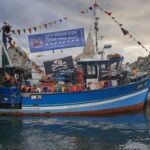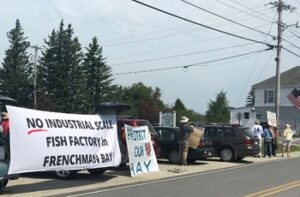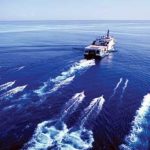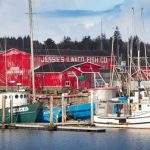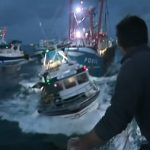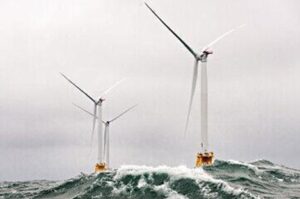Tag Archives: Chesapeake Bay
Furious over threats to the (Chesapeake) bay [Letter]
I speak on behalf of all those who are passionate about the health of the Chesapeake Bay when I say I am furious (“Farm pollution rule withdrawn,” Nov. 18).It seems like with every passing week, there is another story about dead zones, or fisheries in decline, or harbor businesses struggling; but no mention of meaningful attempts to restore the bay. read more here 13:13
Scientists unable to completely explain the mystery of the missing blue crabs
 A year and a half ago, there seemed to be no shortage of good news about blue crabs. The annual winter dredge survey estimated 764 million blue crabs were in the Bay, the most in 19 years and a huge jump from the previous year. The governors of Maryland and Virginia issued a joint news release talking about the “extraordinary explosion in juvenile blue crab abundance.” [email protected] 13:19
A year and a half ago, there seemed to be no shortage of good news about blue crabs. The annual winter dredge survey estimated 764 million blue crabs were in the Bay, the most in 19 years and a huge jump from the previous year. The governors of Maryland and Virginia issued a joint news release talking about the “extraordinary explosion in juvenile blue crab abundance.” [email protected] 13:19
Virginia winter blue crab dredge fishery closed for another year
 The Chesapeake Bay winter crab dredge fishery will be closed for yet another year after Virginia Marine Resources Commissioners voted unanimously Tuesday to give the bay’s depleted stock of iconic blue crabs time to rebuild. [email protected] 10:02
The Chesapeake Bay winter crab dredge fishery will be closed for yet another year after Virginia Marine Resources Commissioners voted unanimously Tuesday to give the bay’s depleted stock of iconic blue crabs time to rebuild. [email protected] 10:02
Multistate agreement in works for Chesapeake Bay
States in the Chesapeake Bay watershed are working to have a new cleanup agreement ready by October with clearer goals and greater flexibility and transparency. continued@thestatejournal
VIMS study: Dead zones bad for bay-bottom fishes, too
 Now researchers at the Virginia Institute of Marine Science, or VIMS, have completed an exhaustive 10-year study that they say provides the first quantitative evidence of the impacts on demersal fishes baywide. continued@dailypress
Now researchers at the Virginia Institute of Marine Science, or VIMS, have completed an exhaustive 10-year study that they say provides the first quantitative evidence of the impacts on demersal fishes baywide. continued@dailypress
New Virginia Institute of Marine Science study shows ‘dead zone’ impacts Chesapeake Bay fishes
The study, published in the May issue of Marine Ecology Progress Series, was authored by Andre Buchheister, a Ph.D. student in William & Mary’s School of Marine Science at VIMS, along with VIMS colleagues Chris Bonzek, Jim Gartlan d, and Dr. Rob Latour. Low-oxygen conditions—what scientists call “hypoxia”—form when excessive loads of nitrogen from fertilizers, sewage, and other sources feed algal blooms in coastal waters. [email protected]
d, and Dr. Rob Latour. Low-oxygen conditions—what scientists call “hypoxia”—form when excessive loads of nitrogen from fertilizers, sewage, and other sources feed algal blooms in coastal waters. [email protected]
A collaborative approach to Chesapeake Bay restoration
Today, pollution threatens all of the recent progress we’ve made at cleaning up the Chesapeake Bay. At risk is not only the ecosystem’s survival, but also a way of life for so many. Despite successful pollution reduction efforts, excessive nitrogen, phosphorus and sediment from runoff also still contribute to harmful algal blooms, “dead zones” and loss of underwater grasses. continued @ tidewaternews.com
How does the Chesapeake Bay spell antacid relief? O-Y-S-T-E-R-S!
Like ocean waters around the world, the Chesapeake has become more and more acidic as a result of rising levels of carbon dioxide in the atmosphere. Now, by studying oyster populations in relation to acidity levels, a team of researchers has concluded that oysters — particularly their shells — can play a significant role in reducing that acidity. continued
Letter to the Editor: VIMS, VMRC caving to commercial interests – Dr. John B. Lapetina Sr., Port Haywood, Va.
Editor, Gazette-Journal: It is with great anguish that I write this letter. It is a letter that I feel in my heart I must write. The Chesapeake Bay is a great national treasure. It was named Chesapeake by the Indians, and it meant “Waters of Many Fish and Shellfish.” My generation and the next generation have just about over-harvested the bay until it is on the edge of its demise. continued
Taking the Long View – The Fall & Rise & Fall of Stripers
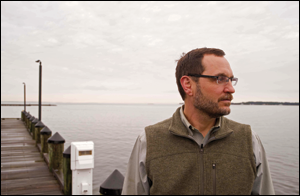
Striped bass, for thousands of years, have been coming back to the great spawning rivers of the Chesapeake Bay. And scientists, for decades, have been trying to figure out why striped bass reproduce so well during certain eras and so poorly during other eras. Bob Wood (above) has come up with a new theory that may answer these old questions. Credit: top, David Harp; bottom, Michael W. Fincham.
That’s a twist worthy of the old gods out of Greek myths. Every gift they ever gave us mortals carried a dark side. As mere mortals trying to manage the natural world, we instinctively try to maximize all the fish that matter most to us. We want a Bay full of stripers and a Bay full of menhaden. But that may not be an option. continued
Md. Oyster Population, Reproduction Up For Second Year
 BALTIMORE (AP/WJZ) — Maryland’s oyster population is continuing to rebound, with more oysters surviving diseases that have plagued the shellfish in the past and hindered Chesapeake Bay restoration efforts, state officials said Wednesday. continued
BALTIMORE (AP/WJZ) — Maryland’s oyster population is continuing to rebound, with more oysters surviving diseases that have plagued the shellfish in the past and hindered Chesapeake Bay restoration efforts, state officials said Wednesday. continued
Waterman cleared of illegal clamming due to lack of notice
 There was nothing fishy about a waterman digging for clams in a protected zone of the Chesapeake Bay because the state natural resources department failed to publish the area’s specific boundaries, Maryland’s top court has held. Read more
There was nothing fishy about a waterman digging for clams in a protected zone of the Chesapeake Bay because the state natural resources department failed to publish the area’s specific boundaries, Maryland’s top court has held. Read more
VIMS finds an ‘off’ year for rockfish
Juvenile striped bass, or rockfish, made a poor showing in Virginia waters this year, but researchers said it’s likely only a natural variability in recruitment and no cause for alarm.http://articles.dailypress.com/2012-11-09/news/dp-nws-bad-year-bass-20121109_1_striped-bass-vims-number-of-young-fish
Striped bass juvenile index falls below average Maryland Department of Natural Resources
“While we expect large variation in striped bass reproduction from year to year and do not view this low value as an imminent problem, we will be carefully monitoring the results of future surveys,” said DNR Fisheries Director Tom O’Connell. “Three consecutive years of poor reproduction would be necessary to trigger mandatory conservation measures.”http://fis.com/fis/worldnews/worldnews.asp?l=e&ndb=1&id=56219
CAPITAL GAZETTE: rockfish survey records all-time low-But lets not get ahead of ourselves! Article, and Analysis. Saving Menhaden Fisheries
Also critica l to the striper stock’s health is adequate food, principally menhaden. For year fishermen and fishing conservation groups have argued that too many adult menhaden are being harvested from the Chesapeake, and as a result a significant ,,,,,Analysis: The article, “Outdoors: Rock survey records all-time low” in the Capital Gazette, alleges that the current rate of menhaden fishing is having a negative impact on predator fish species, such as striped bass, even though the science behind these claims,,,,Read More.
l to the striper stock’s health is adequate food, principally menhaden. For year fishermen and fishing conservation groups have argued that too many adult menhaden are being harvested from the Chesapeake, and as a result a significant ,,,,,Analysis: The article, “Outdoors: Rock survey records all-time low” in the Capital Gazette, alleges that the current rate of menhaden fishing is having a negative impact on predator fish species, such as striped bass, even though the science behind these claims,,,,Read More.
Chesapeake Bay striped bass numbers slump By Timothy B. Wheeler-The Baltimore Sun
After a near-record high a year ago, the drop in the species could spell trouble for recreational and commercial fishing industry. The number of young striped bass in the Chesapeake Bay fell to a record low this year, a drastic decline from a near-record high the year before, Maryland officials reported Tuesday. Biologists checking Maryland’s part of the bay found the fewest newly spawned striped bass that they’ve tallied in any year since annual surveys for the fish began 59 years ago, the Maryland Department of Natural Resources reported. http://www.roanoke.com/outdoors/wb/315532

































